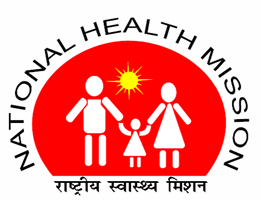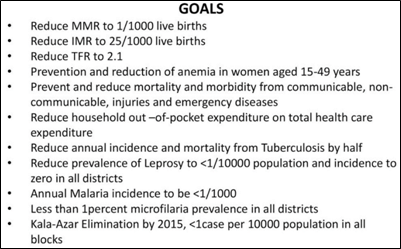Description

Disclaimer: Copyright infringement not intended.
Context
- The Union Cabinet was apprised about the progress under NHM during FY 2020-21.

National Health Mission (NHM)
- The National Health Mission (NHM) is a Centrally Sponsored Scheme launched in 2005. It envisages achievement of universal access to equitable, affordable & quality health care services that are accountable and responsive to people’s needs.
- NHM encompasses its two Sub-Missions, the National Rural Health Mission (NRHM) and the National Urban Health Mission (NUHM).
- The main programmatic components include Health System Strengthening in rural and urban areas, Reproductive-Maternal- Neonatal-Child and Adolescent Health (RMNCH+A), and Communicable and Non-Communicable Diseases.
- Under the National Health Mission (NHM), financial and technical support is provided to States/UTs to strengthen their health care systems. These include setting-up/upgrading public health facilities and augmenting health human resource on contractual basis for provision of equitable, affordable healthcare to all its citizens particularly the poor and vulnerable population in the tribal areas.
Targets under NHM by 2025:
- Reduce MMR to 90 from 113
- Reduce IMR to 23 from 32
- Reduce U5MR to 23 from 36
- Sustain TFR to 2.1
- Reduce prevalence of Leprosy to <1/10000 population and incidence to zero in all districts
- Annual Malaria Incidence to be <1/1000
- Prevent and reduce mortality & morbidity from communicable, non- communicable; injuries and emerging diseases
- Reduce household out-of-pocket expenditure on total health care expenditure
- Ending the TB epidemic by 2025 from the country.
In a nutshell,

Progress under National Health Mission in 2020-21
Employment
- The implementation of NHM in 2020-21 lead to engagement of 2.71 lakh additional Human Resources which includes GDMOs, Specialists, ANMs, Staff Nurses, AYUSH Doctors, Paramedics, AYUSH Paramedics, Programme Management Staff and Public Health Mangers on contractual basis.
COVID-19 Response
- The implementation of NHM during 2020-21 has led to further strengthening of Public Health system which also enabled effective and coordinated COVID-19 response.
Under 5 Mortality Rate
- U5MR in India has declined from 49 in 2013 to 36 in 2018 and the percentage annual rate of decline in U5MR during 2013-2018 has accelerated to 6.0 % from 3.9 % observed during 1990-2012. As per SRS 2020, U5MR has further reduced to 32.
Maternal Mortality Ratio
- Maternal Mortality Ratio (MMR) of India has declined by 443 points from 556 per one lakh live births in 1990 to 113 in 2016-18. A decline of 80% has been achieved in MMR since 1990, which is higher than the global decline of 45%. In last five years, Maternal Mortality Ratio (MMR) has declined from 167 in 2011-13 (SRS) to 113 in 2016-18 (SRS). As per SRS 2017-19, MMR has further reduced to 103.
Infant mortality rate
- IMR has declined from 80 in 1990 to 32 in the year 2018. Percentage annual compound rate of decline in IMR during past five years, i.e. during 2013 to 2018, has accelerated to 4.4% from 2.9% observed during 1990-2012. As per SRS 2020, IMR has further reduced to 28.
Total Fertility Rate
- TFR in India declined from 2.3 in 2013 to 2.2 in the year 2018. The National Family Health Survey-4 (NFHS-4, 2015-16) also recorded a TFR of 2.2. The percentage annual compound rate of decline in TFR during 2013 -2018 has been observed as 0.89%. Currently 28 States/ UTs out of 36 have achieved desired replacement level of fertility (2.1). As per SRS 2020, SRS has further reduced to 2.0.
Malaria cases and Deaths
- In the year 2020, malaria cases and deaths have declined by 46.28% and 18.18%, respectively.
Incidence of TB
- The incidence of TB per 1,00,000 population has been reduced from 234 in 2012 to 193 in 2019. The mortality due to TB per 1,00,000 populations for India reduced from 42 in 2012 to 33 in 2019.
Kala Azar (KA)
- The percentage of Kala Azar (KA) endemic blocks, achieving the elimination target of < 1 KA case per 10000 population, increased from 74.2% in 2014 to 97.5% in 2020-21.
National target of sustaining Case Fatality Rate (CFR)
- The National target of sustaining Case Fatality Rate (CFR) to less than 1 percent was achieved. In 2020, the case fatality rate on account of Dengue has been sustained at 0.01% as it was in 2019.
https://newsonair.com/2022/09/28/cabinet-apprised-of-progress-under-national-health-mission/












